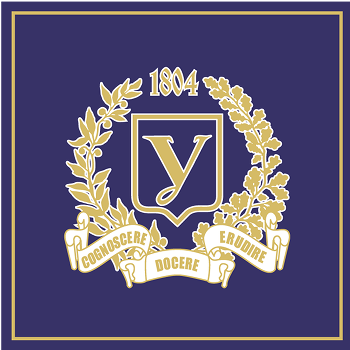ландшафтне планування
- 2017-1-2-:27
Territorial structure of the land use of Kharkiv city
The purpose of the research is to establish and analyze the modern territorial structure of the nature management of the city of Kharkiv for further use in the process of its landscape planning. Methods. Visual decoding of satellite images, vectorization of raster images, analysis of topological correctness and mapometric calculation of areas. Results. On the basis of the analysis of satellite images of the city's landscape coverage and its subsequent classification according to the types of nature use, a cartographic work "Territorial structure of the nature management of the city of Kharkiv" was made. A quantitative assessment of the differentiation of different types of nature management has shown that the largest share is occupied by the residential type, represented by residential and public buildings - 39% of the city. The second type of nature use in Kharkiv is the protective and recreational type, which occupies 27% of the entire territory. Industrial type of nature management occupies 15% of the territory of the city of Kharkiv and is represented by industrial enterprises and mining quarries, which accounted for 98% and 2% respectively. The following territorial distribution is the agrarian type of nature use - 9% of the city's area. The largest share of agrarian type occupies the agricultural type of nature use - 67% of the total area of the type. All transport types of nature use together occupy 8% of the city, half of which are streets of local importance (51%). Conclusions. The main tendencies of spatial distribution of types of nature use are revealed, namely: industrial and residential types of nature management, form spatial "agglomerates", much of which tends to the neighborhood with the areas of aquatic nature use; Territories with an agrarian type of nature management are located on the city suburbs and represent "rudimentary" remnants of the "pre-urbanization" nature of nature use, the protective and recreational type has a unconnected territories and does not create the ecological environmental - stabilizing framework of the city. On the basis of the obtained data, the prospects and possibilities of using this approach to inventory cartographic works for the needs of landscape planning of territorial development of cities are presented.
- 2016-1-2-:25
«Natural» And «Anthropogenic» In Creating The Landscape
The problem of different approaches to the modern interpretation of the concepts of «landscape», «antropohenic landscape» and «natural landscape». Based on the analysis of the new terminology of the authors track retrospective change that dominant processes in the landscape and their consequences. Ending debate is to offer authors use Landscape planning to harmonize current challenges in environmental management of areas of different functional purpose. Listed stages of landscape planning and their possible results.
- 2015-3-4-:24
Future of Landscape Planning as the Means for Optimization of Agroecosystems Functioning
It was determined that landscape planning as a means for optimizing the functioning of agricultural ecosystems has significant potential. The results of the inventory phase of landscape planning of Korobochkinskaya agricultural company were given as an example of updating the classic concept. There were shown the problems of adaptation of landscape planning under the framework research objectives of agroecosystems. It was found that relief and soil are the main landscape elements that need to be explored in the framework of a particular objective.
- 2013-1-2-:19
Methodical going near estimation of landscape mosaicism of territory
The method of estimation of complication of territorial differentiation of landscape is in-process resulted, applying work, both general theory of the systems and theory of understanding of landscape. It is suggested to carry out the quantitative estimation of position location of landscapes by determination of such indexes as: measure of complication, measure of entropy, measure of organization of territory. The eventual point of estimation of landscape mosaicism is consider the calculation of correlation of brindle and homogeneity on an area and to the sign indexes. A concept is entered it is ideal the inlaid landscape.
- 2013-3-4-:20
GIS – simulation of agricultural landscapes for the landscape planning
The article contains the results of research of agro-landscape of the Chuguevskogo district of the Kharkov area for the necessities of the landscape planning. The series of cartographic works are developed with applica-tion hybrid-type GIS – technologies which allow to draw conclusion in relation to the degree of anthropogenic transformation of agro-landscape. The row of optimization measures is offered for the settlement of loading on agro-landscape and improvements of ecological situation in a district.
- 2014-1-2-:21
Assessment of recreational load on landSCAPES NNP «Slobozhanskiy»
Based on the analysis of literature and source material identified key methodological approaches to the study of landscapes in national parks «Slobozhanskyi». A major criteria for the creation of a network of recrea-tional park. Calculated load on recreational landscapes of the national park "Slobozhanskyi." Calculated that the maximum recreational loading in May, June and September, accounting for 9.3%, 8.1% and 8.5%, respectively, of the set limits.
Ключові слова:
- 2014-1-2-:21
Evaluation of the aquatic ecosystem river Kharkiv means of landscape planning
Using elements of landscape planning studies performed complex river basin river Kharkiv in the city. Analyzed the degree of compartmentalization and relief maps of exposure and angles territory. A map of anthropogenic urban landscapes. Allocated land basin with a dominant influence of various factors on the river ecosystem. An experiment to study the water quality in different periods of the functioning of the river. On the basis of the correlation calculation and construction of dendrite clusters allocated plots Basin, which developed recommendations to improve the man-made landscape of the river.

